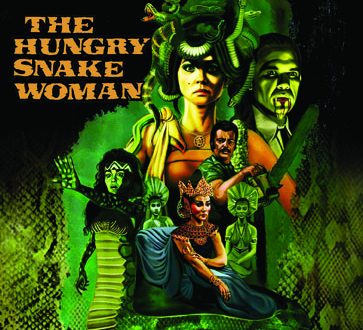Considering his pen name, it comes as no surprise that Christopher Pike is a fan of science fiction. Pike, born Kevin Christopher McFadden, is well regarded as a horror author, yet a closer look at his written output reveals an affinity for sci-fi. Of course his publishers were more inclined to hide that aspect back when young-adult horror was popular; they weren’t exactly forthcoming about the actual plots of Pike’s works. For instance, the 1998 book Magic Fire has the following blurb:
“Mark Charm is a pyromaniac. He’s loved fires ever since he was a kid. Now he’s in high school, and he wants to see the magic one more time. It’s a dry autumn in Southern California and the desert winds are blowing. Mark sits, late at night, a box of matches beside him – would it be so bad, he thinks, if the whole state burned?”
This blurb only covers the first eighty pages of Magic Fire. The story then transforms into something entirely different, but also not unexpected if someone is accustomed to Pike’s leftfield turns and fanciful developments. As stated, SoCal resident Mark Charm is indeed a teenage pyro; he sets small properties ablaze in his free time. Yet his reasons for doing so are more complicated than “fire pretty.” At first, Mark’s firestarting seems like the much needed catharsis for a sad home situation — his mother has terminal cancer. The one bright spot in Mark’s life, though, is Jessa Welling.
Mark isn’t sure why Jessa, this beautiful new student at his school, is interested in him. She’s wealthy, a budding novelist, and a talented actor. However, the two hit it off immediately after Mark introduces himself to Jessa at her school play. Mark even agrees to take a designer drug called MAZE with Jessa. The experience is unique, to say the least. This distant cousin of LSD gives Mark the wildest trip; in a vision he sees aliens with transparent skulls. Upon sobering up, Mark learns his mother died in the hospital while he was on MAZE with Jessa. Angry at himself for not being there, Mark embarks on his biggest burn job yet. He wants to make everyone feel the pain he feels.
Yet in a way a part of him was always on the lookout for something to burn.
Apart from the massive destruction incurred, the plan doesn’t go accordingly. Mark steals a gasoline truck to “start the mother of all fires” in an affluent neighborhood, but things go south later, and Mark and Jessa are severely hurt while trying to escape the growing inferno. Here is where Magic Fire starts to declare its sci-fi elements. There is brief influence from Stephen King’s Firestarter in the second act; the two badly injured main characters are brought to a remote facility by the man in black who Mark previously saw lurking at another fire. This stranger, Mr. Grimes, reveals Mark is a pyrokinetic; the men in his family possess the power to create and control fire. Mr. Grimes also wants to use Mark as a weapon, and his refusal will only delay treatment for Jessa’s extensive burns.
It just wouldn’t be a Pike book without some kind of major twist — and amazingly Magic Fire has a few. Firstly, Mark’s suspicion is proven right when he figures out Jessa has been working with both Mr. Grimes and a doctor named Mr. Brain. They have been monitoring Mark for some time. Jessa’s job was to get close to Mark, but she didn’t plan on falling in love. As betrayed as he feels, Mark continues to work with the secret organization intent on saving humans from an extraterrestrial threat. And their key to success is Mark, whose firepower can destroy the enemies’ central computer.
As if Magic Fire hasn’t already thrown readers a huge curveball, Jessa and other gifted folks like herself — they are all capable of remote viewing — put Mark in a trance where he learns the devastating fate of human life. Centuries earlier, the Cray aliens colonized Earth and destroyed its inhabitants’ physical bodies, leaving behind only their alive but disembodied brains. Those brains have since been floating in tanks monitored by two Crays, Dween and Lartza. Mark saw a glimpse of this during his MAZE induced state. And now Mr. Grimes wants Mark to not only malfunction the computer maintaining the tank but also put an end to what is left of the human race.
The events up to this point have been the work of an immense illusion. It’s all part of a cruel trick of the mind conceived by the Crays. What humans have become cannot be considered living, and Mr. Grimes and others want to end the suffering. Mark doesn’t agree, but he goes ahead with the original strategy. Jessa makes one huge change, though — she can use her power to transplant both her mind and Mark’s into the respective bodies of Dween and Lartza. Mr. Brain wanted to do something similar, yet there was no chance of the Crays agreeing to create artificial bodies for all the brains.
The aliens had not merely conquered Earth.
They had consumed humanity.
He knew he stared at his own brain.
Mark and Jessa implement the plan; the tanks’ computer is completely wrecked so that any surviving brains cannot be salvaged for another experiment. After hijacking Dween and Lartza’s bodies, Jessa and Mark, along with their hosts’ six-year-old daughter Sharmti, set course for the real Earth. What might have been a chance to start over, however, is eventually undone by Mark’s hunch. The undamaged carton of cigarettes Jessa somehow found on this desolate Earth was part of what clued Mark in; the smokes should have been rotten after several centuries. And the Cray name for Earth, M-1-26-5, stands for MAZE, with the numbers representing letters from the Roman alphabet. Mark ultimately realizes nothing since Mark and Jessa’s first meeting has been real. In the end, Mark asks Jessa to leave this place with him, but she refuses.
In the epilogue, Mark awakens somewhere in Mexico at one of the many escapism clinics that specialize in MAZE (Mental Alteration Zeitgeist Expansion). The year is 2010. Mark is there with his sister Shani, who looks like an older Sharmti. Here Mark made one last attempt to save Jessa, after she handed over her whole inheritance to a MAZE clinic so she could live in an addictive, artificial world of her own making. She’s been under for too long, and it’s likely she won’t be coming out anytime soon. The fires, Mark’s ailing mother, Mr. Grimes, Mr. Brain, the Crays — practically everything was the work of a young novelist who was unsatisfied with reality.
Magic Fire comes from a long line of books about simulated reality; Philip K. Dick, Ray Bradbury and other authors have all explored the concept. At its core, though, this is a love story with facets of classic fairytales. Mark, the book’s own prince minus the white horse, goes to the opposite end of the universe to save his beloved. He gives up a lot to be with Jessa. Going against tradition, however, the ostensible princess here doesn’t want to be saved. Jessa is instead the mastermind behind the bleak world Mark is trapped in. She conceives a troubling scenario where Mark is isolated, gaslighted, and manipulated. Jessa kills his mother, then makes Mark go through physical and mental hoops in order for them to be together. By the end, it’s unclear what role Jessa is playing in this deconstructed fairytale — is she the princess, or is she the villain? There’s really no reason why she can’t be both.
Christopher Pike is a flexible author when it comes to speculative fiction, but it wouldn’t be out of line to say his natural habitat is sci-fi. His enthusiasm for “out there” narratives is on full display whenever he heads for the stars. Yet once landing back on Earth, Pike is sure to deliver a gut-punching conclusion like only he can. Readers wary of Pike’s non-horror works should feel confident knowing Magic Fire shares the same notable traits of his more macabre offerings: complicated young characters, end-of-world stakes, and a bittersweet undercurrent. The genre makes no difference when Pike tells a good story.
There was a time when the young-adult section of bookstores was overflowing with horror and suspense. These books were easily identified by their flashy fonts and garish cover art. This notable subgenre of YA fiction thrived in the ’80s, peaked in the ’90s, and then finally came to an end in the early ’00s. YA horror of this kind is indeed a thing of the past, but the stories live on at Buried in a Book. This recurring column reflects on the nostalgic novels still haunting readers decades later.


























































![Mason Ramsey – Twang [Official Music Video] Mason Ramsey – Twang [Official Music Video]](https://i.ytimg.com/vi/xwe8F_AhLY0/maxresdefault.jpg)





![“Are You Afraid of the Dark?” – Middle Grade Novels and Graphic Novels Coming Soon! [Exclusive] “Are You Afraid of the Dark?” – Middle Grade Novels and Graphic Novels Coming Soon! [Exclusive]](https://i0.wp.com/bloody-disgusting.com/wp-content/uploads/2022/11/dark-2.png?resize=995,600&ssl=1)


















